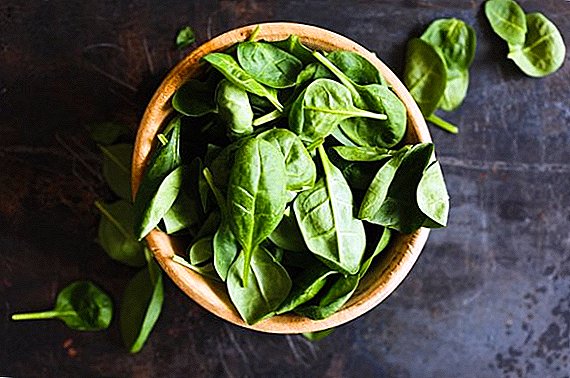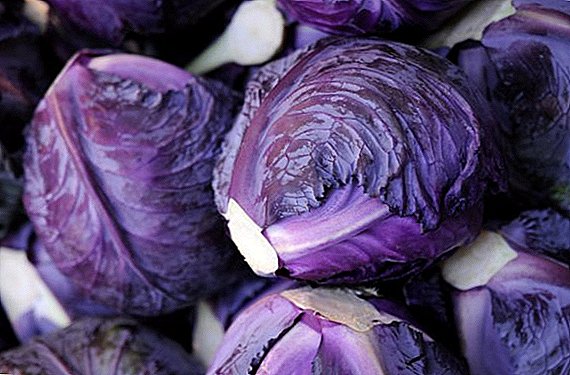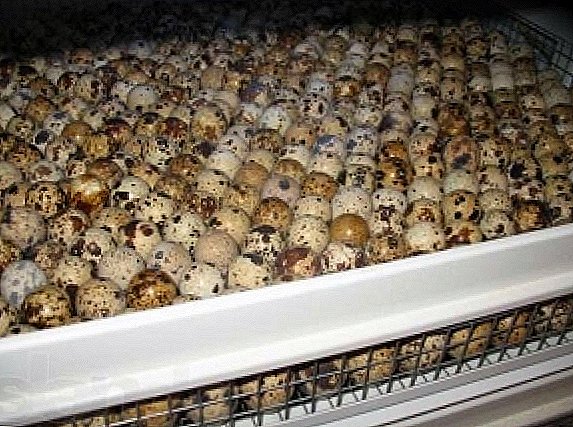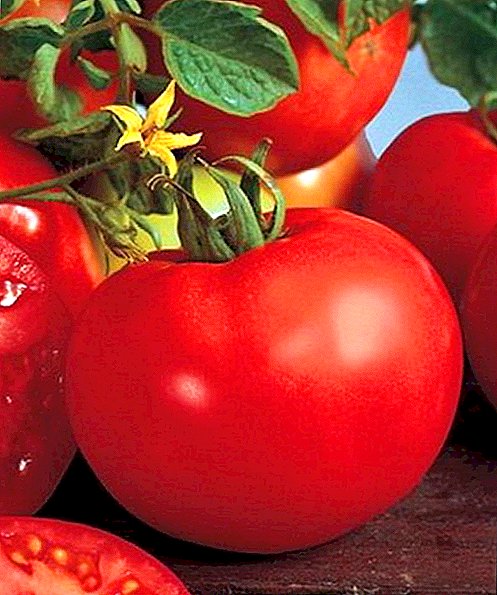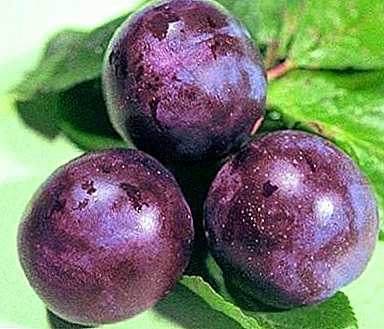
Each gardener is satisfied with the variety of plums of the Hungarian Moscow, even despite the fact that she has average palatability.
The fact is that it is reliable enough in yield, able to endure abrupt changes in the weather and disease resistant.
Description plum Hungarian Moskovskaya
Plum tree of the Hungarian Moscow medium thickit reaches 3 meters in height. His crown is spreading, round-spherical shape, quite thick. The leaves of the tree are of medium size, they are green and elongated. Plum fruits on the bouquet branches and on the one-year growth.
The fruits of the “Hungarian of Moscow” have average size, their weight is about 20 grams. They are oval-round, sometimes can be asymmetric and ovoid. The abdominal suture of the fetus is pronounced.
The skin is rough, has a dark purple-red color with a wax purple-blue patina. The flesh of the plum is very dense and coarse, it is juicy, has a yellow-amber color. Stone of medium size, has an elongated oval shape.
The taste of fruit is mediocre, sweet and sour. The Hungarian Moscow plum surpasses other plum varieties growing in the area in its taste, but it is much inferior to the southern varieties.
A photo
Photo plums "Hungarian Moskovskaya":




Breeding history and breeding region
Hungarian Moscow belongs to the variety of national selection. Such varieties over a long time and gradually formed in a particular area, as a result of which they are called ancient or local.
Ideal conditions for the cultivation of the Hungarian Moscow is the Moscow region. Grows well in the Central region of Russia.
Characteristics of a variety
Such varieties of plums do not differ in their quickness: for the harvest to be good, it is necessary that 8 years have passed since planting. However, the wait is worth it, since a large number of fruits immediately ripen, and every year they will be more and more.
Varieties of plums, pleasing their high yields: Firefly, Hungarian Korneevskaya, Memory of Timiryazev, Renklod Altana, Renklod collective farm, Renklod Soviet, Kroman, Blue gift, Starting, Morning, Bolkhovchanka, Skoroplodnaya.
Hungarian Moscow reaches its removable maturity in mid-September. The average productivity of a single adult tree is about 20-35 kg of plum.
Variety refers to self-fertilehe does not need pollinators, he independently pollinates and regularly bears fruit. Stone from the fruits of such a plum is easily separated.
"Hungarian Moskovskaya" is winter-hardy in central Russia. If the plum grows in good conditions, it will be resistant to fungiHowever, sometimes it can and suffer.
Planting and care
 For the "Vengerki Moscow" need a well-heated soil. Such a drain will grow poorly in areas that are in depressions of the relief and in closed depressions.
For the "Vengerki Moscow" need a well-heated soil. Such a drain will grow poorly in areas that are in depressions of the relief and in closed depressions.
In addition, poor growth will be observed on sandy and marshy soils, heavy dense clay.
Fruits grow better in sunny places.and in the shadow they may not appear at all.
Planting Hungarian recommended in spring time. The landing pit is prepared in advance. When digging a hole, remove the fertile layer. The width of the landing pit should reach 60-80 cm, and its depth - 40-50 cm.
Having dug a hole, it is necessary to fill it in half with soil mixed with mineral and organic fertilizers, then leave it for two weeks.
It is best to plant a plum in permeable loamy soil.To plum brought a lot of fruit, plant "Hungarian Moscow" is best where there is a lot of sun.
When it is time to plant a seedling in a hole, it should be positioned so that the root of the root system is higher than the ground level. The pit is filled with soddy soil without fertilizers and trampled slightly. In the center of the pit they drive in a stake to which the plum seedling is tied up.
After landing, the Hungarian Moscow must be poured with four buckets of water.
Hungarian needs good moisture. In the first half of the summer you need to actively water, about 5 buckets per tree. Watering can be called good if the plum soil is moistened to a depth of approximately 40 cm.
In the first year after planting, the Hungarian does not need fertilizers. Since the third year, it is necessary to give her mineral fertilizers, before the autumn digging, phosphorus and potassium are applied. In the spring and after flowering plum needs nitrogen fertilizers.
 If the soil is highly acidic, then it can be ground with ash or dolomite flour.
If the soil is highly acidic, then it can be ground with ash or dolomite flour.
If the leaves of the plant on their edge noticeable brownness, or if the leaves are curled, then Hungarian need to feed the granules of magnesium and potassium.
If a the leaves became light, they do not have enough nitrogen, so you need to spray them with nitrate and urea.
Plum "Hungarian Moskovskaya" is characterized by strong growth in the first years of its life, and the branches can grow unevenly.
Sometimes it happens that the top of the tree becomes lower than the side branches. In this case it is necessary to shorten the gains. Every year it is required to get rid of frozen tops and thin out strongly dense branches.
In order for the Hungarian not to freeze in the winter, the snow, in the case of a cover height of about 20 cm, must be compacted in the near-stem circle.
Diseases and pests
Variety of plums hungarian moscow is prone to such a disease as smallpox virus. It usually appears in spring: rings appear on the leaves, stripes or round-shaped spots that have a bright yellow-green color.
Sometimes these changes are barely noticeable. Symptoms of the disease can persist until autumn.
The fruits of the diseased tree have spots, rings and green stripes. Over time, healthy tissue develops around them, with the result that potholes that resemble smallpox are formed on the fetus.
The fruits of a sick Hungarian are tasteless, mucous. They ripen about a month ahead of schedule and quickly fall off. By the time of harvest, a third of the fruit remains on the trees. The harvest becomes less on 70-80%.
 The only method of fighting smallpox is the destruction of diseased trees. To avoid infection, it is necessary to plant a virus-free planting material.
The only method of fighting smallpox is the destruction of diseased trees. To avoid infection, it is necessary to plant a virus-free planting material.
"Hungarian Moskovskaya" may suffer from such a disease as hommoz or gum therapy.
This disease is a discharge of colorless or yellowish thick resin in places where branches were cut and in some places on the bark. Struck gum branches of plums often dry out.
To overcome gommoz, plum need to provide good care, it is impossible to prevent mechanical damage. All wounds should be immediately disinfected with a 1% solution of copper sulphate and covered with petalatum.
In the case when the branches were severely affected by gumming, they need to be removed. The bark that has become dead is removed, and the infected sites are rubbed with leaves of horse sorrel and covered with garden wars.
If there are few pests, you can get rid of them thanks to the infusion of onion or garlic, as aphids do not like a pungent smell. This infusion is processed not only the trunk, but also the foliage, and the solution should fall on the back side of the leaves.
Sometimes “Hungarian Moscow” is attacked by moths and sawflies (yellow and slimy). Caterpillars caterpillars, which are up to 2 cm in length, attack fruits, as a result of which they can destroy up to 50% of the entire crop.
Sawmills damage the leaves and feed on the bones of young plums. To get rid of such pests, every autumn it is necessary to plow tree trunks, since it is in them that such insects spend the winter. To prevent the occurrence of pests, the tree can be treated with a fungicide. Once and for all get rid of them, you can resort to insecticides.
On the plum "Hungarian Moskovskaya" can gall mites, which suck the juice from the plants. The leaves of the plum will turn brown and fall prematurely. The tree on which there are many fruit mites ceases to bear fruit.
The damaged plant immediately after flowering must be treated with colloidal sulfur or organophosphate insecticides.
 Plum aphid can also harm the plant. It affects the leaves and shoots, resulting in a violation of photosynthesis and slowing vegetation.
Plum aphid can also harm the plant. It affects the leaves and shoots, resulting in a violation of photosynthesis and slowing vegetation.
A tree affected by plum aphids may stop bearing fruit. You can get rid of aphids with insecticides.
Thus, proper care for the Hungarian Moscow and timely pest control will ensure a good and tasty plum crop.


